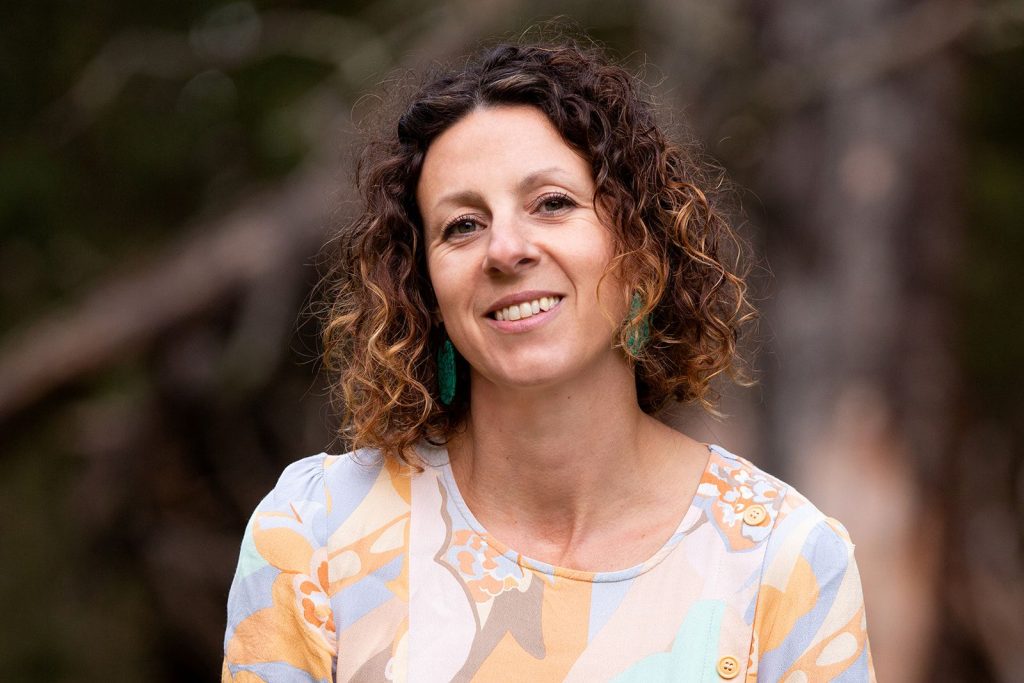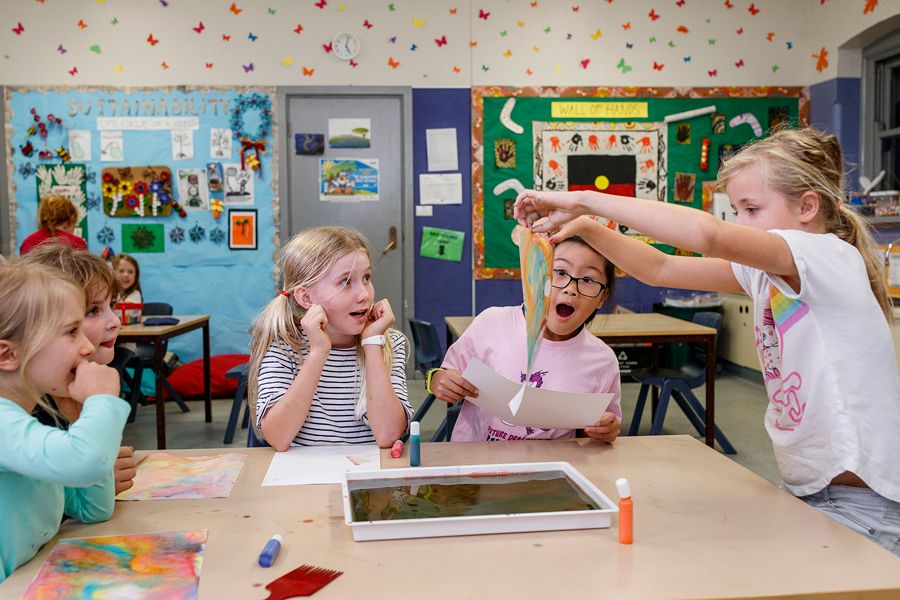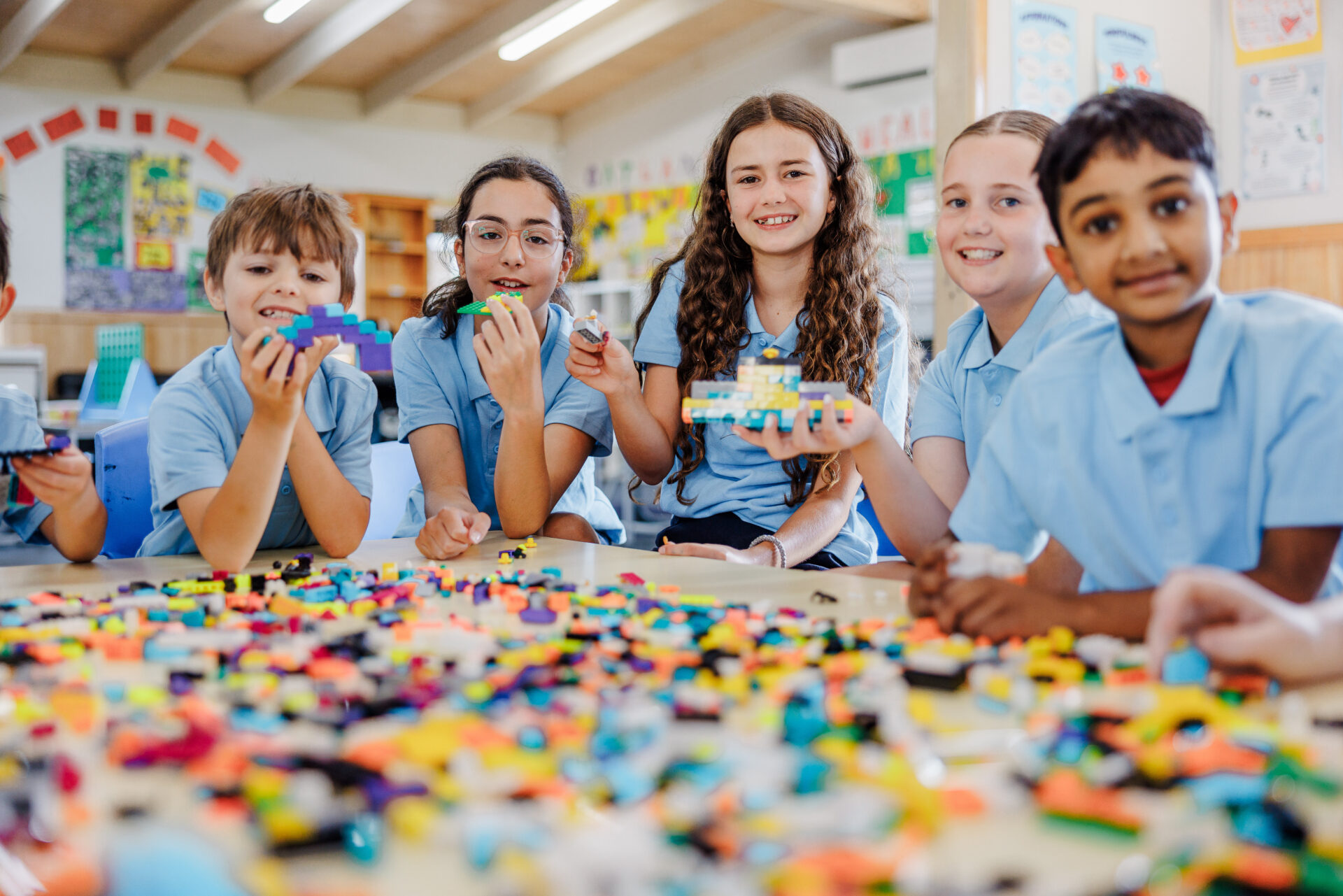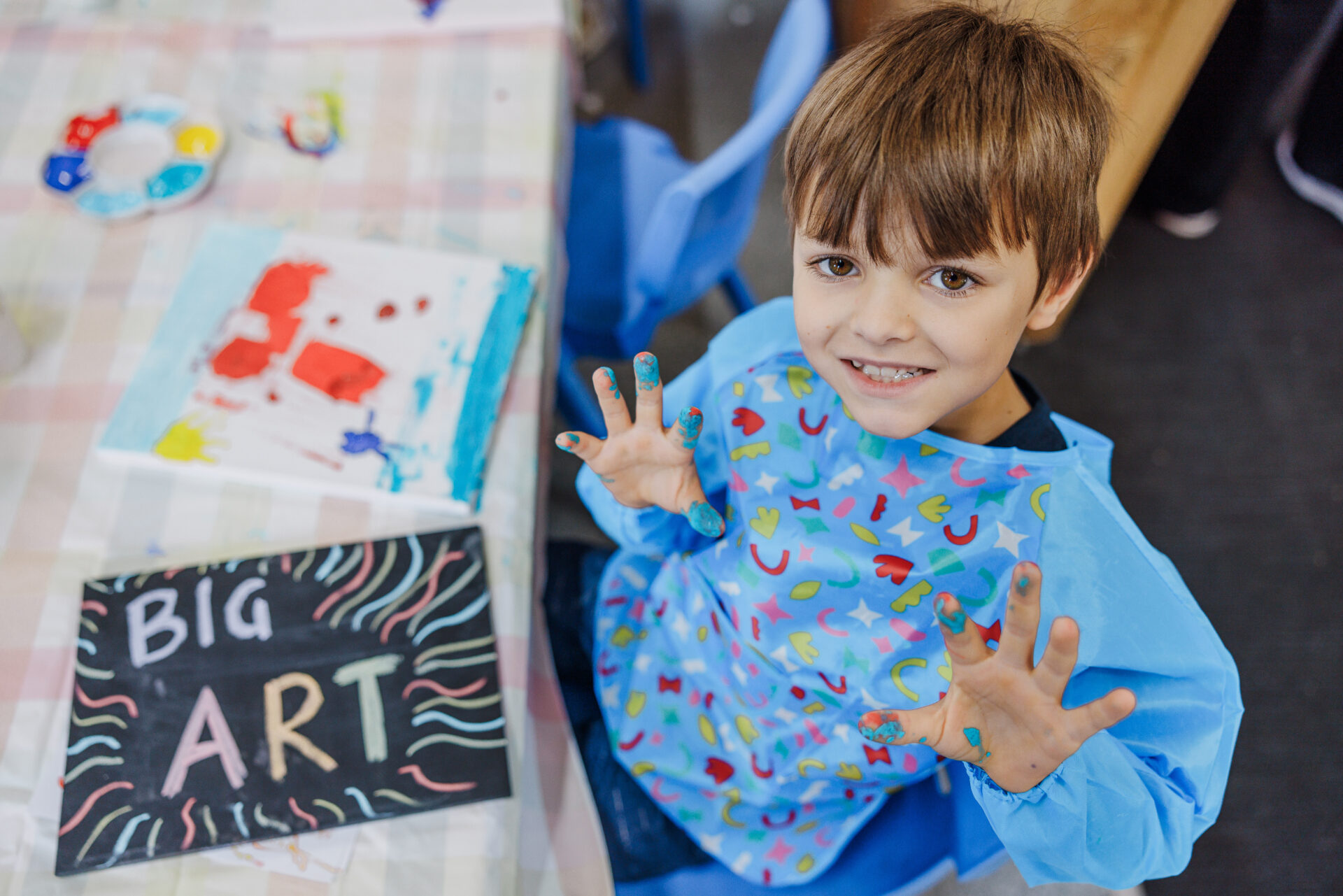Minnie Zammit is a Creative Arts Therapist and Counsellor working with primary and high school aged children. She writes about how to connect with children through art.
As a Creative Art Therapist and Counsellor at Creative Kids Therapy and a Mum of two primary aged kids, one in Prep and one in Year 6; I can understand the juggle and at times overwhelm with being a parent who works, manages the home, kids sports, homework and appointments. Introducing art into the home may not be the priority; I often hear parents don’t want to deal with the mess and think they can do it at school. What many don’t realise is the special bond that you can create introducing art time within the family.
Art is a Form of Connecting
‘Art in any form is an expression or application of human creativity, skill, and imagination. Many of the arts are experienced visually but can also be audible or enjoyed through sensory touch.’ Eden Gallery – What are the 7 different forms of art?
I believe art is a form of creativity and this is represented in many forms, in the most traditional sense it’s often thought of as painting, drawing, sculpting, theatre, music and cinema. However, I see that being imaginative in your art forms and connecting with kids can be so varied; from baking, to dancing, listening to music, playing with kinetic sand, creating forts and making cards.
It’s the opportunity to have time with your kids to CONNECT. We all know how important quality time is with our kids, it’s that space where we can slow- down from our busy lives, hear about their day, how they are feeling, have more deeper conversations, and understand what’s going on for them so they can learn to problem-solve and realise it is ok to talk about things.
Keep it Simple – Create the Space
I also recommend to families to get the basics to create your own art kit. This could be as simple as scissors, paints, art smocks, textas, pencils, chalk, tape and paper. All these creative tools can be stored in a tub/trolley where you can easily access and set up within your home. Creating an art space can be flexible, depending on what you are doing whether it be inside or outside.
What are Your Kid’s Interests?
Knowing your child’s interests and what fascinates them is a great way to start to come up with ideas that will appeal to them. Simply ask your kids what would they like to do with you. This may be an inside activity, out in nature or outside play, maybe a project they are working on – it can be quite simple but still engaging and calming.
Depending on the age gap between your kids, you can still do the same activity and make some adjustments and they can apply it to their own individual interests.
Art Ideas to Connect with Children
While there are many forms of art that could be worked with across the primary school ages, there are some that are more suited for your upper primary than lower due to fine motor skills.
Art Ideas for 8 – 13-year-olds
- Art Journals – A wonderful place to write your feelings and express it through art.
- Watercolours – a good use of paint, less messy and dries quickly. Using a straw to blow the paint, creating patterns is a good mindfulness and calming down activity.
- Mandalas – Colouring is well known for its calming effects and the creativeness of a mandala allows your child to choose the colours that resonate with them. There are many resources available online to download these at home or Mandala colouring books are great.
- Making Slime – This can be messy but kids love the science around making it; there are numerous types, colours, glitter and it has a range of sensory and calming benefits.
- Baking – Decorating cupcakes or a cake can be fun and kids can learn a lot from looking up recipes and the process.
- Vision Board – A great positive mindset tool. Collaging, cutting pictures from a magazine, printing things off, words of inspiration and stickers of things they love and want for the year ahead.
- Other art ideas; Tie dying, clay, colouring, drawing, music and dancing
A number of these can be used for younger ages.
Art Ideas for 7-year-olds and Under
- Playdough – Making playdough, choosing a colour, and then making shapes and objects.
- Kinetic Sand – Having a tray with the sand and build different shapes and structures.
- Lego – Loved across all the age groups and can be good to use with set instructions from kits to build or to freely create buildings, planes, cars etc.
- Face painting – A creative way to decorate faces or become a character.
- Chalk Art – A simple and easy way to get kids outside drawing on the driveway, brick walls and easy to wash off.
- Music, dancing and art – Playing some tunes and dancing as a family or putting on the music for the kids to draw or paint too.
- Nature art – Going on a walk and collecting things in nature to stick on some paper, paint, build or make a mobile.
There are many wonderful ways to use art to connect with your kids and simple ideas can be found online. What we want is to keep it simple, be creative in your approach and enjoy the benefits of you being able to have that quality time with your child to connect more deeply. Observing your child as they create, seeing how they approach it, watch them grow in a creative way. Make art time part of your family’s week.
The Big Art Comp is a great way to connect with your child – entries close 27 March and is open to all children registered with Camp Australia. More details: https://campaustralia.com.au/big-art-comp.

Minnie is a Mum of two primary-aged kids and is a Counsellor and Creative Arts Therapist at Creative Kids Therapy. She provides therapeutic Creative Counselling for kids, teens and parents. She uses a range of Creative Arts Therapy, Sandplay Therapy, Emotional Freedom Technique (EFT-tapping) and other ‘talking’ therapies. She provides a safe space, offering techniques to gain self- awareness, manage big emotions, learn new coping strategies and problem-solving skills. Kids and teens find they can engage in this process quite easily and often feel like they are just playing and creating. Minnie also develops and facilitates small Art Therapy groups in schools for students who are at risk or school refusing.
She is passionate about working with kids, teens and supporting families so they can see their own strengths and feel happier in life.





